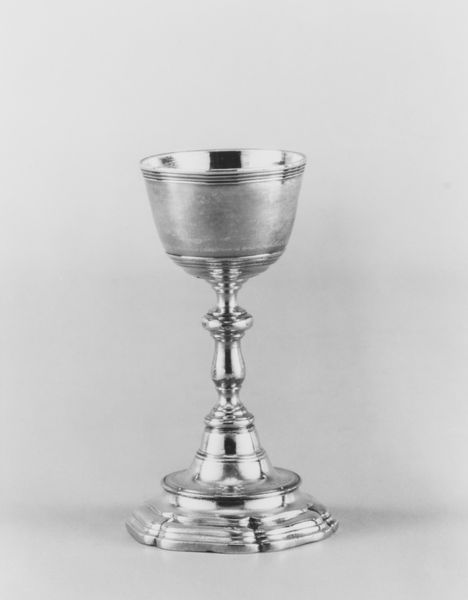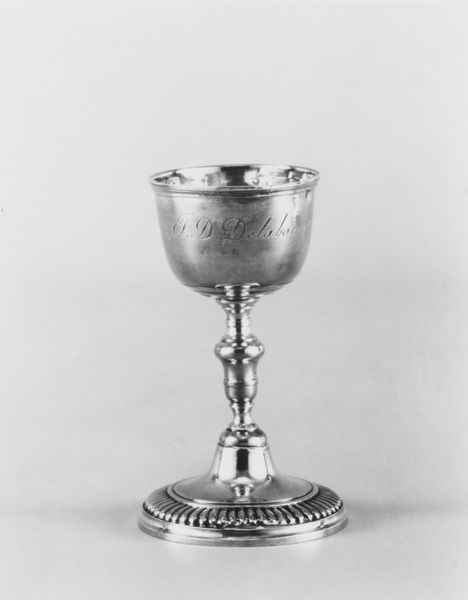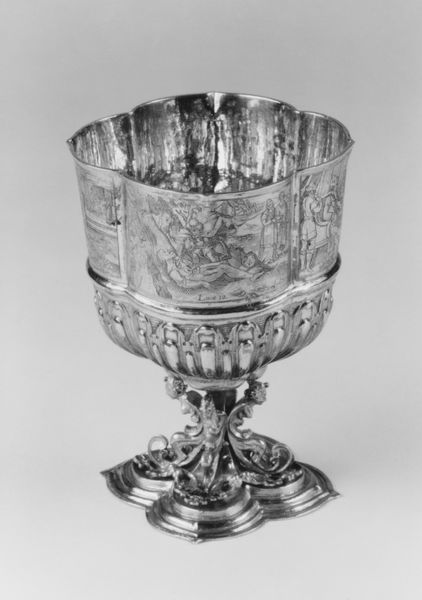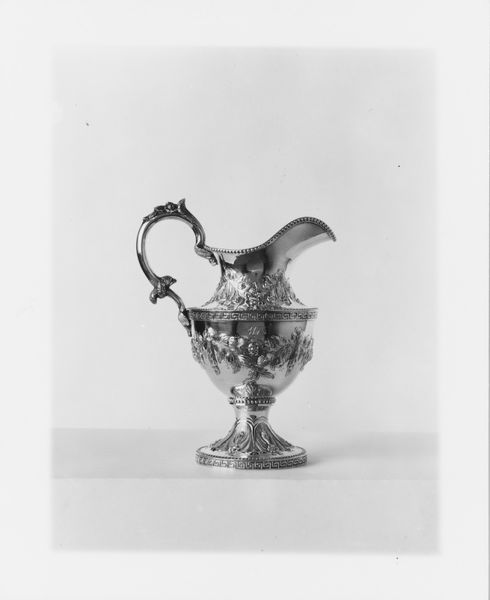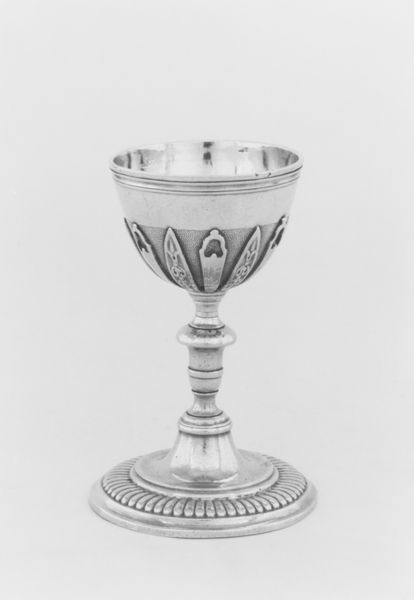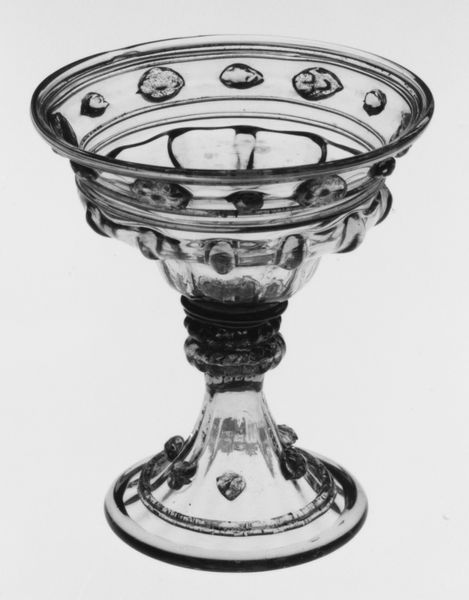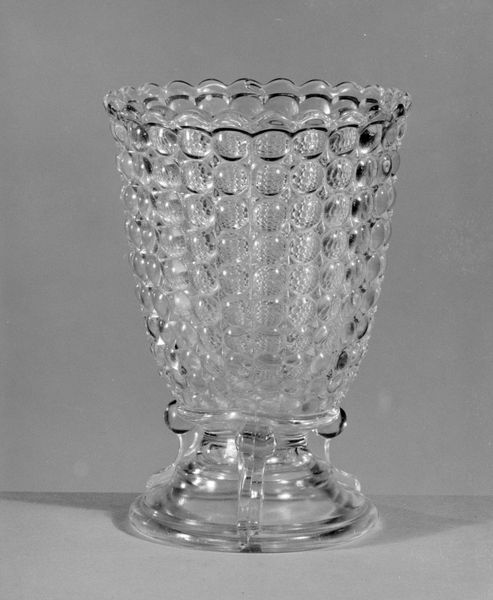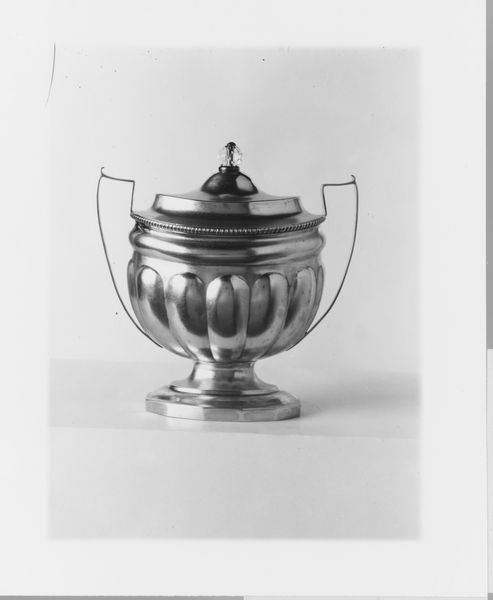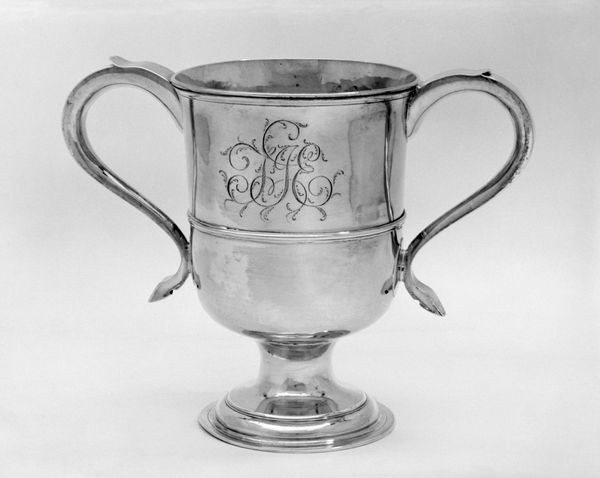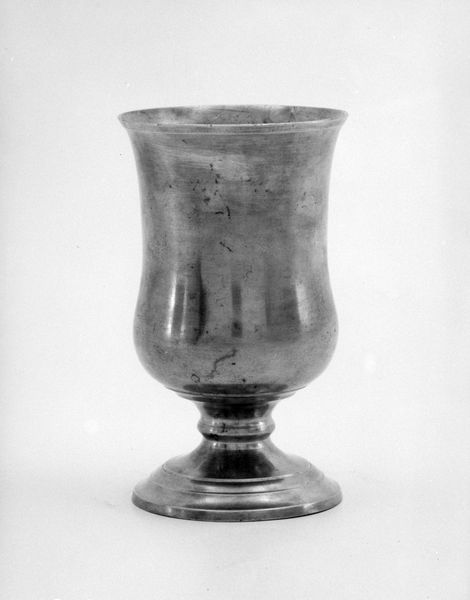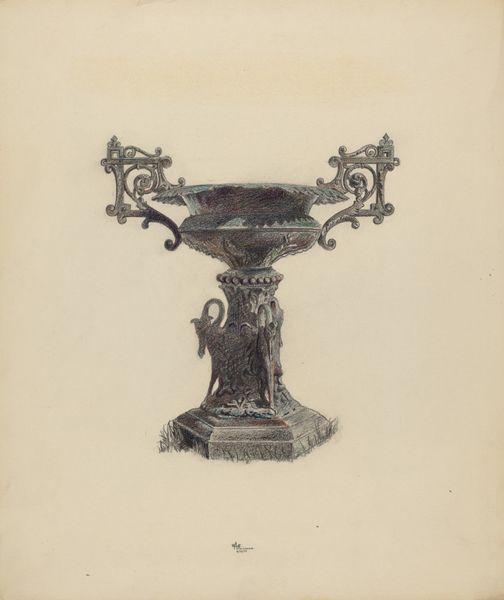
silver, metal, photography, sculpture
#
still-life-photography
#
silver
#
metal
#
photography
#
black and white theme
#
sculpture
#
decorative-art
Dimensions: Overall: H. 6 3/16 in. (15.7 cm); 18 oz. 6 dwt. (568.6 g) Lip: Diam. 5 13/16 in. (14.8 cm) Foot: Diam. 4 1/4 in. (10.8 cm)
Copyright: Public Domain
Curator: Here we have a stunning silver "Waste Bowl," created sometime between 1835 and 1845 by Robert and William Wilson. Editor: It’s arresting, isn’t it? The severe monochrome and stark presentation give it a certain solemnity, even a starkness, despite the ornate detail. Curator: Indeed. Waste bowls like this were essential during formal tea services in the 19th century, acting as repositories for tea dregs and rinsings. Their design often mirrored the elegance of the tea sets they accompanied, as you can see in the elaborate floral motifs. Editor: A “waste” bowl seems like an almost brutally honest admission of excess and the societal structuring needed to even have these types of objects to collect and dispose of “waste." Does this kind of opulent disposal contrast against anything we understand about contemporary living? Curator: It’s a pointed observation. Consider how this ostentatious disposal plays out against a backdrop of rapidly expanding industrial labor and evolving social classes during this era. Tea services were statements of refinement and economic power. Editor: So the bowl isn't just functional; it's performative, underlining class distinctions in every shared ritual? Curator: Precisely. The neoclassical design elements – notice the repeating geometric patterns – blend with the more romantic floral carvings, subtly linking the owner to historical power while signaling contemporary good taste. Editor: I’m drawn to how this object—originally crafted for a space of privilege—can now be seen through an almost cynical lens. It transforms into a study of production and excess, demanding reflection from viewers like us. Curator: I think that duality is key to understanding decorative arts in museums: Their stories shift with time and critical perspectives. Editor: Well, considering the bowl now, its existence certainly stimulates dialogue that echoes into contemporary spaces! Curator: Indeed! And it serves as a potent reminder of how tastes, trends, and class consciousness get materialized into artifacts of their eras.
Comments
No comments
Be the first to comment and join the conversation on the ultimate creative platform.
